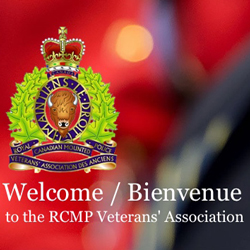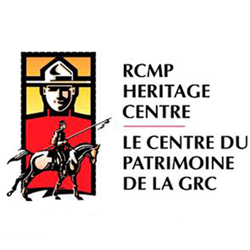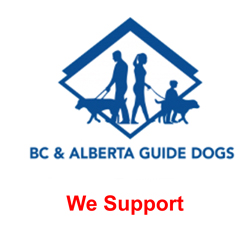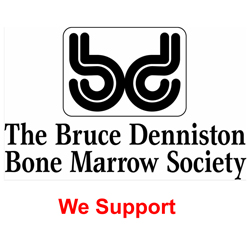Part 2 – “B” Squadron RNWMP
The activities of “B” Squadron RNWMP and their activities are provided below and includes of members who were there. The history of the Squadron is provided in this comprehensive historical account of the Squadron’s creation, deployment, activities, challenges and return to Canada, their story is being broken down into six parts:
- Part 1 – How the Force Got Involved in Going to Siberia
- Part 2 – From Recruitment to Embarking on SS Monteagle
- Part 3 – On Route to Vladivostok Siberia and First Impressions
- Part 4 – Activities in Siberia 1918 to 1919
- Part 5 – Deployment and Off-Duty Activites
- Part 6 – Demobilization and Return to Canada
Part 2 – From Recruitment to Embarking on SS Monteagle
With commencement of the recruiting process as authorized by the Canadian government, the Canadian Army approved the Commissioner’s recommendations on the officers for the “B” Squadron members. On September 20, 1918, the following members were assigned the corresponding military commissions in the Canadian Army:
– Supt. George Worsley (O.123) – Commanding Officer of the Squadron (Major);
– Supt. Arthur William Duffus (Reg. 3159 O.133) 2nd in Command (Captain);
– Supt. Richard Young Douglas (O.129) – Troop #1 Commander (Lieutenant) ;
– Insp. Thomas Sherlock Belcher (Reg #3058 O.146) – Troop #2 Commander (Lieutenant);
– S/Major Thomas Caulkin (Reg. #4557 O.193) – Troop Commander #3 (Lieutenant); and
– Insp. Frank Henry French (Reg. #4355 O.163) – Troop Commander #4 (Lieutenant).
Depot Division had been selected as the training center for the Squadron since the Force had the training staff, facilities to house the men and horse as well as being close to the CNR rail line.
ESTABLISHING STRUCTURE
The most of the Squadron’s NCOs came from volunteers in the Force. Remaining Squadron members consisted of Constable in the Force and individuals recruited from communities on the priaries. The following is a list of the initial NCOs and their corresponding rank within the Squadron:
Reg. #4314 Charles Earnest Wilcox – Staff Sergeant
Reg. #4608 Herbert Unsworth Green – Staff Sergeant
Reg. #3238 Robert William McLeod – Staff Sergeant (Quarter Master)
Reg. #4092 Walter Munday – Staff Sergeant
Reg. #4748 William Mulhall – Sergeant
Reg. #5111 Charles Richardson – Sergeant
Reg. #4347 William Alden Johnson – Sergeant
Reg. #4440 Robert Eldridge Mercer – Sergeant
Reg. #4600 Wyndham Bruce – Sergeant
Reg. #3573 Henry Maurice Fowell – Corporal
Reg. #4657 George Henry Bridger – Corporal
Reg. #4709 Frederick William Schultz – Corporal
Reg. #5103 Edward Montagu – Corporal
Reg. #3835 Ralph Portien Smith – Corporal
Reg. #4214 William Earnshaw Ashworth – Corporal
Reg. #6377 Alfred John Robbins – Corporal (Transport NCO)
Reg. #4642 Sydney Francis Barber – Corporal
Reg. #5536 David Churchill – Corporal
Reg. #5129 Reginald Smith – Corporal
Reg. #4991 Frederick Darwin – Corporal
Reg. #4812 Joseph Craig – Corporal
Reg. #4249 David Ross Wilson – Corporal
Only one appointed NCO came from outside the Force – James Edward Margett who was assigned the Regiment #7373 and the rank of Sergeant. He was a Veterinary Surgeon and came from the 77th Battery of the Canadian Field Artillery.
The remaining ranks of the Squadron consisted of:
– 24 RNWMP Constables volunteered from various areas within the Force;
– 51 Force members were in Depot and had been sworn in from April 1 to August 29, 1918). Seven were certified as “Not Medically Fit” for service in the Western Front. For example, Cst. Abraham Belvis (Reg. #7451) was discharged on November 25, 1918 when it was found that he was under age.
– 90 individuals recruited to “B” Squadron based on the Recruiting Poster program.
Most of the new recruits were ranch and farmers from western Canada and from the United States. All the new 90 individuals were: sworn into the RNWMP; assigned a Force Regimental number; and agreed to serve for three years.
UNIFORM & KIT
Members of the Squadron were issued the following items at Depot Division.
The Canadian Army Cavalry issue uniform had been requisitioned from the Military District Ordnance and the RNWMP uniform items were provided by the Depot Quarter Master Stores.
John Stewart (Reg. #7421) described the Squadron’s uniform by stating:
Our Squadron was issued with and wore a cavalry dress consisting of a cloth forage cape. The khaki jacket had a roll collar to accommodate a gas mask if needed. The riding britches were khaki and made of whip cord material. We rode a lot and the britches were comfortable to wear. For shoes, we were issued several types. The heavy leather ammunition shoe clad with iron studs and the heel had a light iron ‘horseshoe.’ Of course we removed all the studs as they drew the frost. We had a pair of felt shoes, reinforced with leather at the wear spots. They were very warm and light. We also had moccasins and long black stockings. We were also issued with what was called shoepack – leather oil tanned and laced up to the knee. All of the foot wear was comfortable. In order to give them a good test, we were required to wear all of them each ay so we were kept busy changing footwear after each parade. We wore the ordinary fur cap in cold weather and cloth forage caps in mild weather. Force badges worn were – RNWMP cap badge, RNWMP collar badges, RNWMP metal shoulder badges surmounted by the ‘CANADA’ badge.
“Squadron wore a purple shoulder patch with a red star. These patches were issued to us in midwinter – early 1919. The blue patch represented the Fifth Division of the Canada Army. Other Canadian units wore different types and colors of patches. A tailor in our unit sewed the patches on and did other alternations to our uniforms such as altering the riding britches.[1]”
The purple patch was worn on both uniform shelves between the elbow and shoulder. It was not actually issued to “B” Squadron until early 1919 in Vladivostok Siberia.
While in “B” Squadron “we wore the cap badge with a black backing and a red felt next to the badge. In Siberia, we wore our cap badge on the fur hat. No cap badge was worn on fur caps in Canada.[2]”
The purple patch was worn on the both uniform shelves between the elbow and shoulder.
TRAINING AT DEPOT
Once all the new Squadron members had been organized into barrack rooms at Depot and the uniform issued, their training began. Training was primarily in the area of: cavalry formation, sword drills and weapons training.
According to James W. Stewart (Reg. 7421), “I joined the Force, RNWMP, at Edmonton (Sept. 3, 1918) and was posted to Depot for training. On arrival there, “B” Squadron was being recruited so I joined that body and became a Cavalry Trooper. We trained mostly mounted, on the prairie west of the CP Railway tracks where the Airport is now.[3]”
Between training, sleeping and eating, Squadron members spent time in the Depot Canteen. According to Robert Mercer (Reg. #4440), “it had beer and candy and stuff – chocolate bars, and so on. Beer was five cents a glass, a big glass. It would open up after stables at 12:15 PM. In those days, we could drink in the middle of the day. At quarter past 12, they’d come and get their beer. Then in the evening up till 9 o’clock then it was closed up.”[4]
According to John Stewart, revolvers were only issued to the Officers and NCOs. All other ranks were issued with long bayonets and a Lee Enfield rifle. All Squadron members were issued with the 1908 British Cavalry sword. I do not recall any markings on the sword and was quite sure there were no RNWMP markings on it. We had extensive sword drills mounted and on foot during our time in Siberia. The sword was carried in a sling on the left side for the saddle. Our swords were shipped in boxes from Regina and were re-issued to us in Siberia. The Squadron was issued with a Hotckiss gun which was put in charge of Cpl. Sydney Barber (Reg. #4642)[5]” for Troop #1.
According to the Canadian Siberian Expeditionary Gazetteer – “Personnel of “B” Squadron, RNWMP, in addition to the Short Magazine Lee Enfield, carried the Pattern 1908 cavalry plus each troop of 40 men were issued a .303 Hotchkill cavalry model, strip fed, light machine gun.[6]”
The Hotckiss gun was a classic French machine gun of World War I. Weapon was re-chambered for .303 caliber and issued to both British and Canadian Cavalry units. It was employed as a support weapon for the Canadian Cavalry units.
Weapons was designed to be transported on the rear of a horse saddle as illustrated in the photograph.
Major George Worsley reported on the training of Squadron members – “Recruits of a very excellent type joined up in Regina and commenced cavalry training. As most of these were of the ranch and farmer class of the West, no great difficulty was experienced in making them efficient horsemen.
The nucleus of the Squadron was formed of old members of the RNWMP nearly all the NCOs having been taken from it, and as they had received a good grounding in cavalry training, no difficulty was experienced in making the Squadron efficient before leaving Headquarters (Depot) of the Force.[7]”
SQUADRON HORSES
The Commissioner agreed to locate and provide sufficient number of horses for use by the Squadron. Horses were provided from within the Force and through public advertisement.
RNWMP General Orders 13015 (November 11, 1918) provided a listing of all Force horses being turned over the Department of Militia and Defense for the RNWMP “B” Squadron (Cavalry) Siberia. In so doing, these horses are struck off the Force’s inventory.
ADVANCE PARTY TO SIBERIA
As with other military components of the Canadian Siberia Expeditionary Force, a Squadron Advance Party left Regina in early October 1918 and headed to Victoria to meet up with other Advance Parties. Purpose of the Advance Party was to travel to Vladivostok Siberia to locate, secure and prepare suitable accommodates for the full deployment of the Squadron’s men, horses and equipment.
For “B” Squadron, Captain Duffus was selected and members of his advance party were as follows[8]:
The Advanced Party travelled by the CNR to Coquitlam where they disembarked joined up with other General Emsley’s Advance Parties. A few days later they caught a ship to Victoria.
On October 11, 1918, the Squadron’s Advance Party along with “680 sailed on the Canadian Pacific liner Empress of Japan, after a final inspection in Victoria by (Major-General S.C.) Mewburn (Canadian Minister of Militia and Defense).[9]”
SPANISH INFLUENZA
“The pandemic explosion of Spanish influenza in 1918-19 claimed far more fatalities than the war. Most vulnerable and likely to succumb to the ‘flu’ were the very young, the aged and the infirm. Influenza was introduced to Canada by returning servicemen and it spread across the Dominion with alarming speed and devastation.[10]”
The Spanish flu hit Canada on September 9, 1918 and was spread across Canada via troop trains heading west with returning troops. The influenza hit Regina and Depot Division on October 9, 1918.
On October 10, 1918, the Regina Morning Leader reported that 17 RNWMP officers had been infected with the flu.
John Stewart (Reg. # 7421) provided his comments about the Spanish Influenza at Depot in October 1918. “Several members did die of the Spanish Flu at Depot. I was one of the first to be admitted to ‘Hospital’ on a Saturday afternoon in October 1918. Before evening, several other members were admitted. We were in hospital, which was in an old Golf House which was located on the golf course west of the Barracks midway towards the CPR tracks. We were all discharged by the following Tuesday. I was put on light duty but was detailed to Stable Orderly. By the following weekend, I was so ill that I was re-admitted to the same hospital. By that time, the place was full and some were waiting to be admitted. I was in the hospital very ill for 21 days. Several members in the same large room died from the Flu.
A grave was dug for me but I recovered and was discharged week or so later to another auxiliary hospital on the Square. On my arrival there, I was given a bed and we were all provided with tasty foods etc… and allowed to eat all we wanted. There was no nurse there and I only remember one nurse working in the first hospital.
I remember her rubbing my chest one night with mustard and she thought that I had pneumonia. She took sick and I did hear of her again.
About the same time when I was in the hospital, two men who I thought were officers came to my bedside and had me make a Will which I signed.[11]”
At Depot, the following members of “B” Squadron died from the Spanish Influenza:
Trooper H. MacLean
Trooper G. Allebaugh
Trooper J. Fanthorpe
Trooper A. Harvey
Trooper G. Harvey
At the time, there was concern that the deployment of the Squadron may have to be deployed for one month as 50% of the members had come down with the flu.
Trooper George Kennedy (Reg. #7374) of the Advance Party died at Coquitlam B.C. of the Spanish Influenza and two Troopers were hospitalized.
When the main body of the Squadron eventually left Regina for Vancouver – the effects of the Spanish Influenza followed the Squadron. Three Troopers were dropped off at the following locations to be hospitalized:
– North Battleford – Trooper Ernest Reid;
– Edmonton – Trooper Leonard Tyrrel; and
– Kamloops – Trooper W.L. Davidson.
According to Major Worsley’s report, “passing through Alberta the men of the Squadron were provided with masks to protect them from infection.[12]”
At the Queen’s Park Camp in New Westminster, the RCMP surgeon described the condition of the Squadron members as “all very weak with severe coughs and poor appetites, making a very slow recovery. And unfit for an extended trip on the North Pacific ocean at this time of year.[13]”
For this reason, the RNWMP Commissioner thought it prudent ‘to postpone departure for one month, as he did not think that the Squadron was yet free from the Spanish Influenza. However, they were quickly pressed into service.[14]”
On January 15, 1919, the following recovered from the Spanish Influenza and joined the Squadron in Siberia[15]:
DEPARTING DEPOT DIVISION
On November 1, 1918, the members of “B” Squadron were “transferred to the C.E.F. and granted leave of absence, without pay, from the RNWMP until discharge from the Canadian Expeditionary Force and transferred to the Muster Roll of “B” Squadron RNWM Police (Cavalry) at Headquarters”[16]
In addition, each member of the Squadron were assigned their own unique Canadian Expeditionary Force service number. A block of service numbers were used by the Squadron starting with 2683746 and ending with 2772665.
According to Major’s report to the Commissioner, “The training continued until the seventh of November, when the Squadron entrained, proceeding by Canadian Northern Railway. The following stops were made for watering and feeding horses:
– North Battleford,
– Edmonton, and
– Kamloops.
At the latter place, the stock-yards are most commodious and we were enabled to give our horses a good rest before reaching Vancouver.[17]”
James Stewart stated “we loaded our horses and equipment on the CNR at Regina and arrived at Vancouver 5 days later.[18]” The CNR train was dedicated to transporting the Squadron from Regina to Vancouver and consisted :
John Stewart also commented on the quality of the food on the CNR rail from Regina to Vancouver – “We had been fed very well in the mess at Depot but we soon had a rude awakening when we were on the train. The first meal, supper, was served in a cold old bare baggage car. The dinning staff were money makers. No cooked food except for cold pale tea. We asked for more but were told that it was all they had to serve. We asked for the Orderly Officer and he was told the same story but better food was promised for the next meal – breakfast. However, we expected much the same fare in spite of complaints. On night, three of the Dining Car Staff came through our sleeping car which was called “Colonist” and offered us some food that they had on trays. Sandwiches, cheese sardines and some meat which they offered for 50 cents each and trimmings were extra. We soon realized that we were the Goats. The next night when the same offering came along – a few of us met the staff at the vestibule door. On the pretext that the car was crowded, we got the staff to hand the trays ahead to us. When we had all of the trays in the car, the Staff were pushed out and into the next car and told to get going. We consumed the food from thetrays and felt much better. It was obvious that we were being offered food that we should have had at our regular meals. We arrived in Vancouver and had our next meal in a mess at Hastings Park camp.[19]”
SQUADRON IN VANCOUVER
Major Worsley describes their arrival at Vancouver to the Commissioner – “the horses were placed in good stables on the Exhibition Grounds. The accommodations for the men, however, was poor, whether in lofts above the horses or in tents pitched in a swamp which for the most of the time was a quagmire.[20]”
As per normal in the Force, the horses were the priority and were constantly carried for and fed.
On the 17th of November the Squadron embarked on the Canadian Pacific Ocean Steamship ‘Monteagle’, consisting of four officers, 141 other ranks, 163 riding and ten team horses.[21]”
On the same date, Major Worsley received a telegram from Commissioner Bowen Perry stating “Very best wishes for the success of “B” Squadron. Good bye A.B. Perry.”
The Squadron departed with four officers 141 other ranks and 163 horses and 10 teams of horses. Also on the same ship, there were 288 other soldiers and 129 horses.
VANCOUVER – THREE NOTABLE INCIDENTS
First Incident – According to Major Worsley’s report to the Commissioner, there was one notable incident which was noted in his report and verified by many interviewed Squadron veterans:
“The embarkation was without incident with one exception – Horse A-43 jumped off the dock when being lead on board and fell into the water between the ship and the wharf and swimming underneath, about fifty feet below. By skilful management of the part of a few of the Western cowpunchers and the assistance of the ship’s derrick, the horse was caught and brought up and taken back to Hasting Park, not the worse for its immersion. No one present expected to see this horse alive again.”
Second Incident – This second incident was not contained in Major Worsley’s report to the Commissioner.
Randolph Holding (Reg. #7389) recalls an incident that took place in the stables at Hastings Park in Vancouver. According to Randolph, “each soldier had his own bridle and he took care of it in his own way. One day as I went up alongside my horse I noticed my bridle was on the next horse. The man whose horse it was rushed up and tried to stop me. He said to me ‘why are you taking off my bride’ angrily. I replied ‘I know my own bridle.’ Next the man and I stood pulling at the bridle. The noise attracted the Sergeant Major. He came up accompanied by Major Worsley. I ended up winning the argument because he was unable to show the officer his number stamped on the bit.”
Third Incident – Issues relating to Lieutenant Richard Douglas were not included Major Worsley’s report to the Commissioner. However, the behaviour of this officer was well known to most members of the Squadron.
According to Wyndham Bruce (Reg. #7373), Lieutenant “Douglas was difficult, vindictive, and mean. Worsley knew it and made allowances for it. I recall that Douglas was hated so much in Vancouver his kit and belongings were thrown into the bush when the Squadron moved into Hastings Park.
I got Sergeant James Margetts (Reg. #7373) to tell me where it was so that there wasn’t too much trouble after Douglas complained to Major Worsley.”[22]
William Rowland (Reg. #7433) outlined that Lieutenant Douglas “was openly referred by the men as ‘Jo-Jo the Dog Face.’ He was too fussy and particular.[23]”
James Stewart (Reg. #7421) substantiated Bruce’s comment of Douglas by stating Dougas “was detested by all ranks, even the Officers. I found him not too bad. He always called me Laddie and always pointed out my faults so that I was able to improve myself as time went on.[24]”
Melvine Anthony (Reg. #7351) described Douglas – “was my Troop Commander being in command of No. 1 Troop, Canadian Expeditionary Force, Siberia R.N.W.M.P. Cavalry. He was perhaps the most disliked officer in the Squadron but a lot of the resentment, I think, was caused by not understanding the gentleman.[25]”
DEPARTING VANCOUVER
At 5 PM on November 17, 1918 and six days after the signing of the Armistice and ending World War I, the Monteagle departed Vancouver on route to Vladivostok Siberia.According to Randolph Holding (Reg. #7389), “When we left Vancouver the Canadian people had high expectations of us soldiers. The Vancouver Sun put it this way – we were expected to bring justice and order out of the darkest chaos of disorder and anarchism. We were only half successful. We brought an end to the chaos but were unable to halt the steady recurrence of political murder(s).[26]”
Check more details – Part 3 – On Route to Vladivostok Siberia and First Impressions
[1] Interview with John W. Stewart (Reg. #7421) on May 26, 1983.
[2] Interview with John W. Stewart (Reg. #7421) – November 22, 1982.
3] Interview with John W. Stewart (Reg. #7421) – November 22, 1982.
[4] Interview with Robert Mercer (Reg. #4440) – January 23, 1969 – Victoria.
[5] Interview with Wyndham Bruce (Reg. #4600) – January 23, 1969 – Victoria, B.C.
[6] Skuce, J.E. “Canada’s Soldiers In Siberia: 1918-1919” (1990) – page 34.
[7] Worsley, George – Report to Commissioner on “B” Squadron RNWMP – dated 9 October 1919.
[8] General Orders – “B” Squadron RNWMP – January 15, 1919.
[9] MacLaren, Roy – “Canadians In Russia: 1918-1919” (1976) – 157.
[10] Skuce, J.E. – “Canada’s Soldiers In Siberia: 1918-1919” (1990) – page 24.
[11] Interview with John Stewart (Reg. 7421) – December 8, 1982 at Edmonton, Alta.
[12] Worsley, George – Report to the Commissioner on “B” Squadron RNWMP – dated October 9, 1919.
[13] Isitt, Benjamin, “From Victoria to Vladivostok: Canada’s Siberian Expedition, 1917-1919” – UBC Press (2010) – page 85.
[14] Isitt, Benjamin, “From Victoria to Vladivostok: Canada’s Siberian Expedition, 1917-1919” – UBC Press (2010) – page 85.
[15] “B” Squadron General Orders – dated December 5, 1918.
[16] RNWMP General Orders 12998.
[17] Worsley, George – Report to Commissioner on “B” Squadron RNWMP – dated October 9, 1919.
[18] Interview with John Stewart (Reg. 7421) – December 8, 1982 at Edmonton, Alta.
[19] Interview with John Stewart (Reg. 7421) – December 8, 1982 at Edmonton, Alta.
[20] Worsley, George – Report to the Commissioner on “B” Squadron RNWMP – dated October 9, 1919.
[21] Worsley, George – Report to the Commissioner on “B” Squadron RNWMP – dated October 9, 1919.
[22] Interview with Wyndham Bruce (Reg. #5600) – January 23, 1969 – Victoria, B.C.
[23] Interview with William Rowland (Reg. #7433) – January 13, 1969 at Calgary, Alta.
[24] Interview with John Stewart (Reg. #7421) – May 26, 1983 – Edmonton, Alta.
[25] Interview with Melvine Anthony (Reg. #7351) – June 18, 1964 – Edmonton, Alta.
[26] Interview with Randolph Holding (Reg. #7389) – May 21, 1983 – Tompkins, Sask.


 February 26, 2012
February 26, 2012 


























